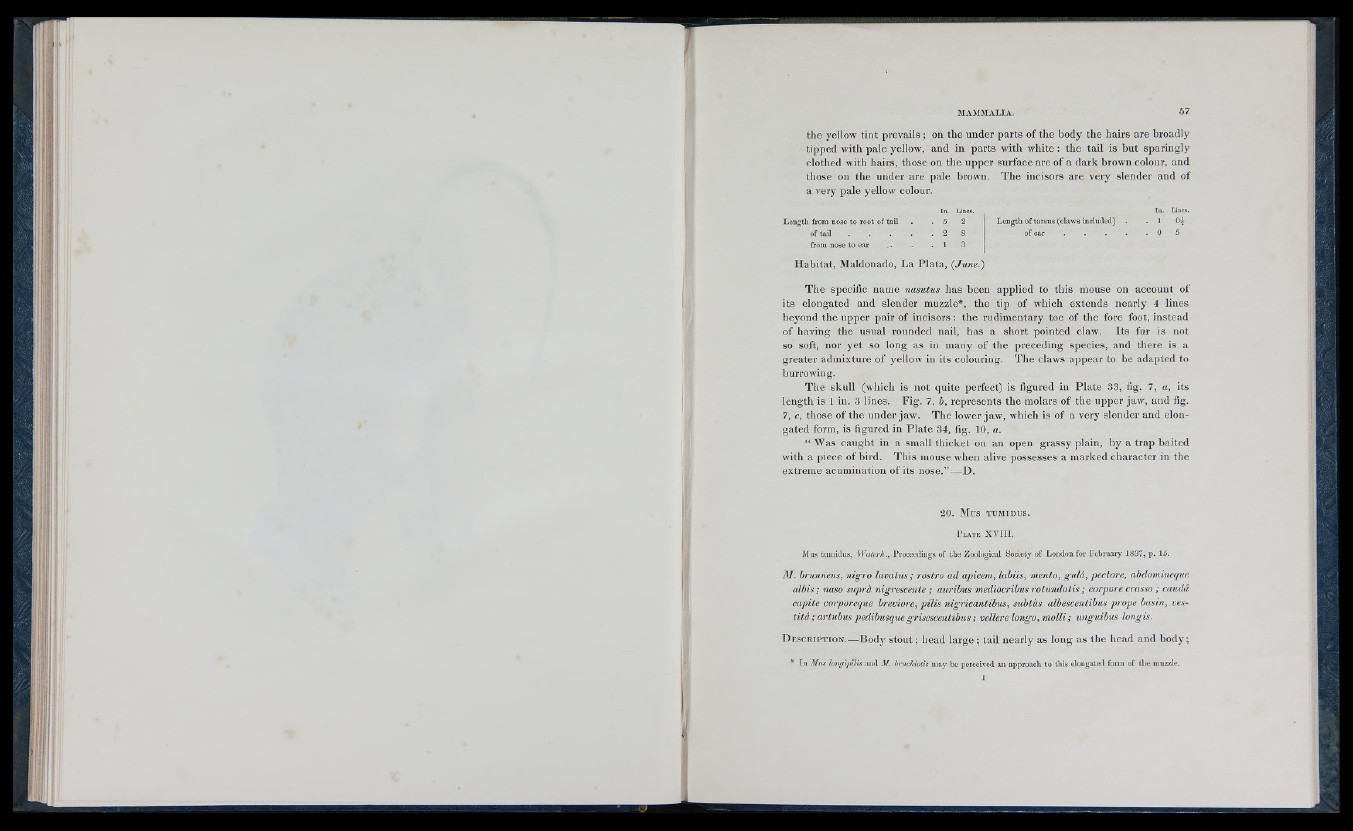
the yellow tint prevails ; on the under parts of the body the hairs are broadly
tipped with pale yellow, and in parts with white : the tail is but sparingly
clothed with hairs, those on the upper surface are of a dark brown colour, and
those on the under are pale brown. The incisors are very slender and of
a very pale yellow colour.
In. Lines.
5 2
2 8
Length of tarsus (claws included)
of ear . . .
In. Lines.
1 04
0 5
Length from nose to root of tail
of tail
from nose to ear
Habitat, Maldonado, La Plata, (June.)
The specific name nasutus has been applied to this mouse on account of
its elongated and slender muzzle*, the tip of which extends nearly 4 lines
beyond the upper pair of incisors: the rudimentary toe of the fore foot, instead
of having the usual rounded nail, has a short pointed claw. Its fur is not
so soft, nor yet so long as in many of the preceding species, and there is a
greater admixture of yellow in its colouring. The claws appear to be adapted to
burrowing.
The skull (which is not quite perfect) is figured in Plate 33, fig. 7, a, its
length is 1 in. 3 lines. Fig. 7, b, represents the molars of the upper jaw, and fig.
7, c, those of the under jaw. The lower jaw, which is of a very slender and elongated
form, is figured in Plate 34, fig. 10, a.
“ Was caught in a small thicket on an open grassy plain, by a trap baited
with a piece of bird. This mouse when alive possesses a marked character in the
extreme acumination of its nose.”—D.
20. Mus TUMIDUS.
P late X V III.
Mus tumidus, W aterh., Proceedings of the Zoological Society of London for February 1837, p. 15.
31. brunneus, nigro lavatus ; rostro ad apicem, labiis, mento, gulâ, pectore, abdomineque
albis ; naso suprà nigrescente ; auribus mediocribus rotiindatis ; corpore crasso ; caudâ
capite corporeque breviore, pilis nigricantibus, subtùs albescentihus prope basin, vestita;
artubus pedibusquegrisesceutibus; vellere longo, molli; unguibus longis.
D e s c r ip t io n .— Body stout ; head large ; tail nearly as long as the head and body ;
* In Mus longipilis and M. Irachiotis may be perceived an approacli to this elongated form of the muzzle.